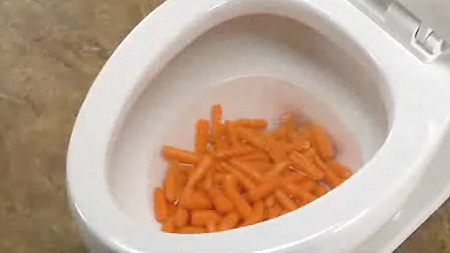What're your ideas regarding Is it safe to flush food (especially rice) down the toilet??

Introduction
Many people are typically faced with the problem of what to do with food waste, especially when it concerns leftovers or scraps. One common question that occurs is whether it's alright to flush food down the bathroom. In this short article, we'll delve into the reasons why individuals may think about purging food, the repercussions of doing so, and alternative approaches for appropriate disposal.
Reasons why individuals might consider flushing food
Lack of recognition
Some individuals might not be aware of the possible harm triggered by flushing food down the commode. They may mistakenly believe that it's a safe practice.
Comfort
Purging food down the toilet may feel like a quick and simple option to dealing with undesirable scraps, particularly when there's no close-by trash bin readily available.
Negligence
In some cases, individuals may simply select to flush food out of sheer negligence, without considering the effects of their actions.
Repercussions of flushing food down the toilet
Ecological impact
Food waste that winds up in rivers can contribute to air pollution and harm water ecological communities. Furthermore, the water made use of to flush food can strain water sources.
Pipes issues
Flushing food can cause blocked pipelines and drains pipes, causing costly plumbing repair services and aggravations.
Sorts of food that should not be flushed
Fibrous foods
Foods with fibrous appearances such as celery or corn husks can obtain entangled in pipelines and create clogs.
Starchy foods
Starchy foods like pasta and rice can absorb water and swell, leading to clogs in pipes.
Oils and fats
Greasy foods like bacon or cooking oils need to never ever be purged down the commode as they can strengthen and create blockages.
Appropriate disposal approaches for food waste
Utilizing a waste disposal unit
For homes outfitted with waste disposal unit, food scraps can be ground up and flushed via the plumbing system. Nonetheless, not all foods appropriate for disposal in this way.
Recycling
Specific food packaging products can be recycled, reducing waste and decreasing environmental impact.
Composting
Composting is an eco-friendly means to deal with food waste. Organic materials can be composted and used to improve dirt for gardening.
The importance of proper waste monitoring
Decreasing ecological harm
Appropriate waste monitoring practices, such as composting and recycling, assistance decrease pollution and protect natural deposits for future generations.
Safeguarding plumbing systems
By preventing the method of flushing food down the bathroom, home owners can prevent costly plumbing repair work and preserve the stability of their plumbing systems.
Final thought
To conclude, while it may be appealing to flush food down the commode for comfort, it is necessary to recognize the prospective repercussions of this activity. By taking on correct waste administration methods and throwing away food waste properly, individuals can contribute to much healthier plumbing systems and a cleaner environment for all.
FLUSH FOOD DOWN THE TOILET?
FLUSHING FOOD CAN CAUSE BLOCKED DRAINS IN YOUR HOME
All of the plumbing fixtures in your home are connected to the same sewer pipe outside of your home. This outdoor sewer pipe is responsible for transporting all the wastewater from your home to the Council sewer mains. Even small pieces of food that go down the kitchen sink can cause problems for your sewer. It should therefore be obvious that flushing larger bits of food, such as meat, risks a clog in either the toilet itself or the sewer pipes. Flushing greasy food is even more problematic because oil coagulates when it cools, coating the interior lining of your pipes.
THE TOILET IS NOT A BIN
Food isn’t the only thing that people shouldn’t be flushing down the toilet. People use the toilet to dispose of all kinds of things such as tampons, makeup wipes, dental floss, kitty litter and even underwear. Water goes to great lengths to educate residents about the high costs and stress placed on wastewater treatment systems simply from people flushing the wrong stuff down the toilet. It costs taxpayers millions of dollars each year, and homeowners thousands in blocked drain repairs.
FLUSHING FOOD IS A WASTE OF WATER
Flushing food is a waste of our most precious resource - water. In June this year Level 1 water restrictions were introduced to protect water supply from drought conditions. Much of New South Wales continues to be affected by prolonged drought with recent figures revealing up to 97 per cent of the state remains in drought. Depending on whether you have a single or dual flush toilet, every single flush uses between five and 11 litres of water. In the current climate this is a huge amount of water to be wasting on flushing food that should be placed in the bin (or better yet, the compost).
https://www.jabplumbingsolutions.com.au/blog/can-you-flush-food-down-the-toilet

I am just very involved in and I'm hoping you liked the entire blog posting. So long as you enjoyed reading our article plz be sure to pass it around. Many thanks for taking the time to read it.
Recurring Service Plans